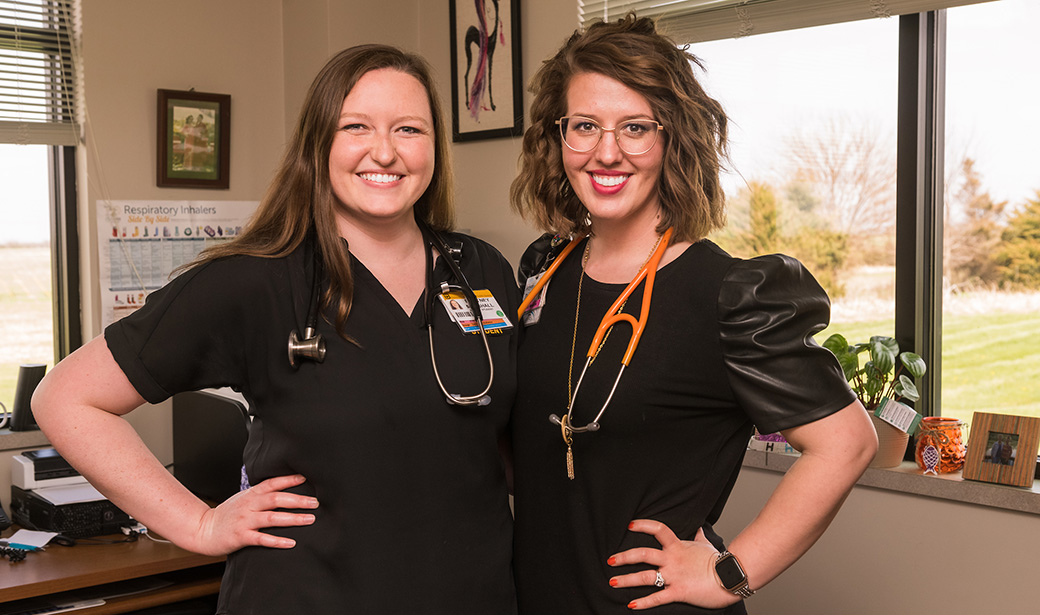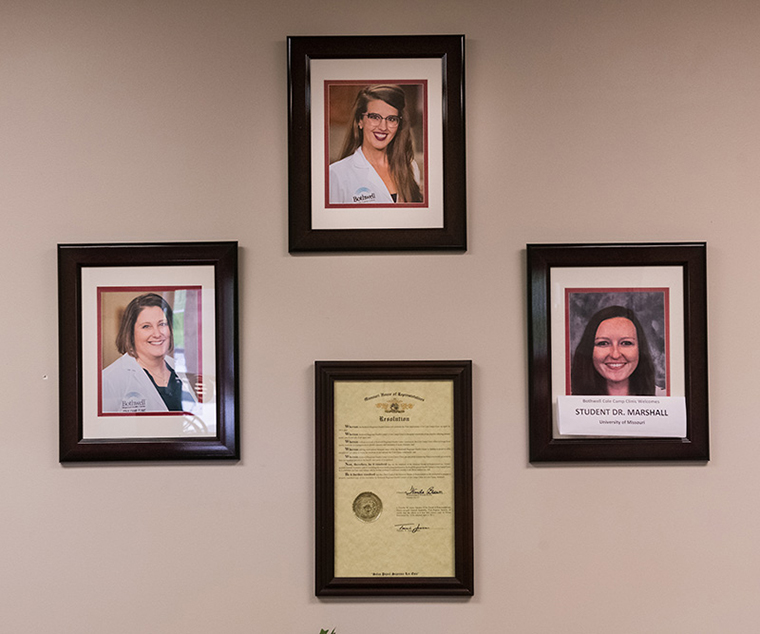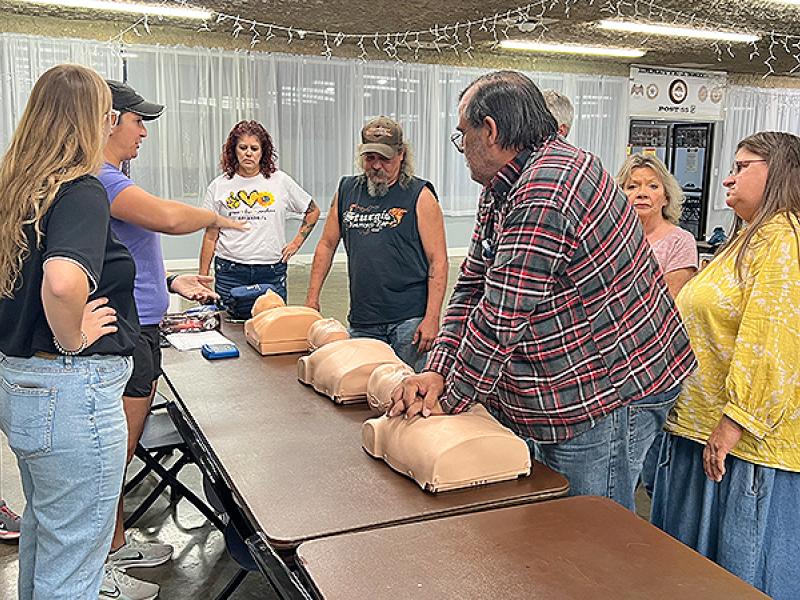
When Brittney Marshall arrived at the front door of the Bothwell Cole Camp Clinic for the first day of her clerkship in June 2021, she was a third-year medical student. As soon as she walked through that door, she became Student Dr. Marshall, which was the name her preceptor, Misty Todd, MD ’17, insisted on calling her. Eventually, Todd’s patients got to know Student Dr. Marshall well and came to trust her advice and value her interest in their lives.
Marshall was one of the first MU students to participate in the Longitudinal Integrated Clerkship (LINC). The curriculum allows medical students to get better insight into what it means to be a doctor in a rural area while learning medicine, building their own patient panel and gaining confidence navigating the complexities of the health care system.
“We’re following patients for the whole year across all aspects of their care,” said Marshall, a native of Republic, Missouri. “We see them in the clinics. We see them in the hospital. We see them when they have a consult with their specialist. That’s been a really great experience, which I think might be a little more true to what my practice will be like in the future.”
Marshall and classmates Madison Bulger and Magdaleno Gutierrez chose to be the pioneers of the LINC program, which is a partnership between the MU School of Medicine and Bothwell Regional Health Center in Sedalia, Missouri. Each year, MU third-year medical students live and learn in Sedalia as part of the program, which is one of the rural health initiatives funded by federal grants from the Health Resources and Services Administration (HRSA) and the Department of Health and Human Services (DHS). The program is expanding, with students also assigned to Hannibal in 2022 and St. Joseph in 2023.
Misty Todd, MD ’17, insisted on treating third-year medical student Brittney Marshall as an important member of the team at the Bothwell Cole Camp Clinic, even hanging up a photo identifying her as “Student Dr. Marshall” in the office.

Rather than gaining clinical experience by progressing through seven core clerkships as in the traditional model, LINC students are assigned to a local primary care physician and learn multiple specialties by following select patients through every step of their care.
On one of her first days in Todd’s clinic, Marshall met a woman who had just been diagnosed with inoperable lung cancer. Marshall followed the patient throughout the disease process, attending oncology and pulmonology appointments and rounding on her at her nursing home. As the disease progressed, the woman was hospitalized at Bothwell, so Marshall rounded on the patient each morning with Todd.
“She was pretty ornery, so sometimes we would have light-hearted conversations where we gave each other a hard time and goofed around with each other,” Marshall said. “But there were some days when she was having a lot of pain and having a hard time breathing, and we would have to talk about whether she was ready to focus on her comfort or whether she wanted to keep fighting this. She was a fighter and fought for a long time before deciding to go on hospice. She passed away about a week later. But it was a really rewarding experience to get to know her so well and be a part of her care.”
On the opposite end of the family medicine spectrum, Marshall joined Todd as she provided prenatal care to expecting mothers, assisted with delivery and then saw the babies for their well-child checkups. She also got to work with multiple specialists — such as emergency room doctors, hospitalists and surgeons — over the course of the year.
“Those are the experiences you don’t get to have in a traditional curriculum where you are in a clinic, then a different clinic, then the OR,” Todd said. “LINC is the best combination of those things every day, which is what my real-life job is like. I think it’s important to let students know and experience how rewarding that can be. We’re more than just doctors and more than just appointments. Patients do become our families and do come to trust us.”
Todd recalled that when Marshall first arrived at her clinic, she was a little bashful about speaking up. By winter, Todd often walked in on Marshall confidently answering patients’ questions exactly the way she would have answered them herself. By late spring, it was time for Student Dr. Marshall’s photo to come down from the wall of Todd’s clinic, but she was leaving with great experience and a role model to emulate.
“Dr. Todd’s been a great mentor for me,” Marshall said. “She taught me a lot about the science of medicine but also the business side of medicine and the heart of medicine.”
A Bridge to Sedalia
The LINC program isn’t the School of Medicine’s only connection to Sedalia. The new Bothwell Rural Family Medicine Residency is now training resident physicians in Sedalia. The program accepts two medical school graduates each year. Participants spend their first year of residency in Columbia and second and third years in Sedalia under the guidance of program director Bob Frederickson, MD, of the Bothwell Regional Health Center.





